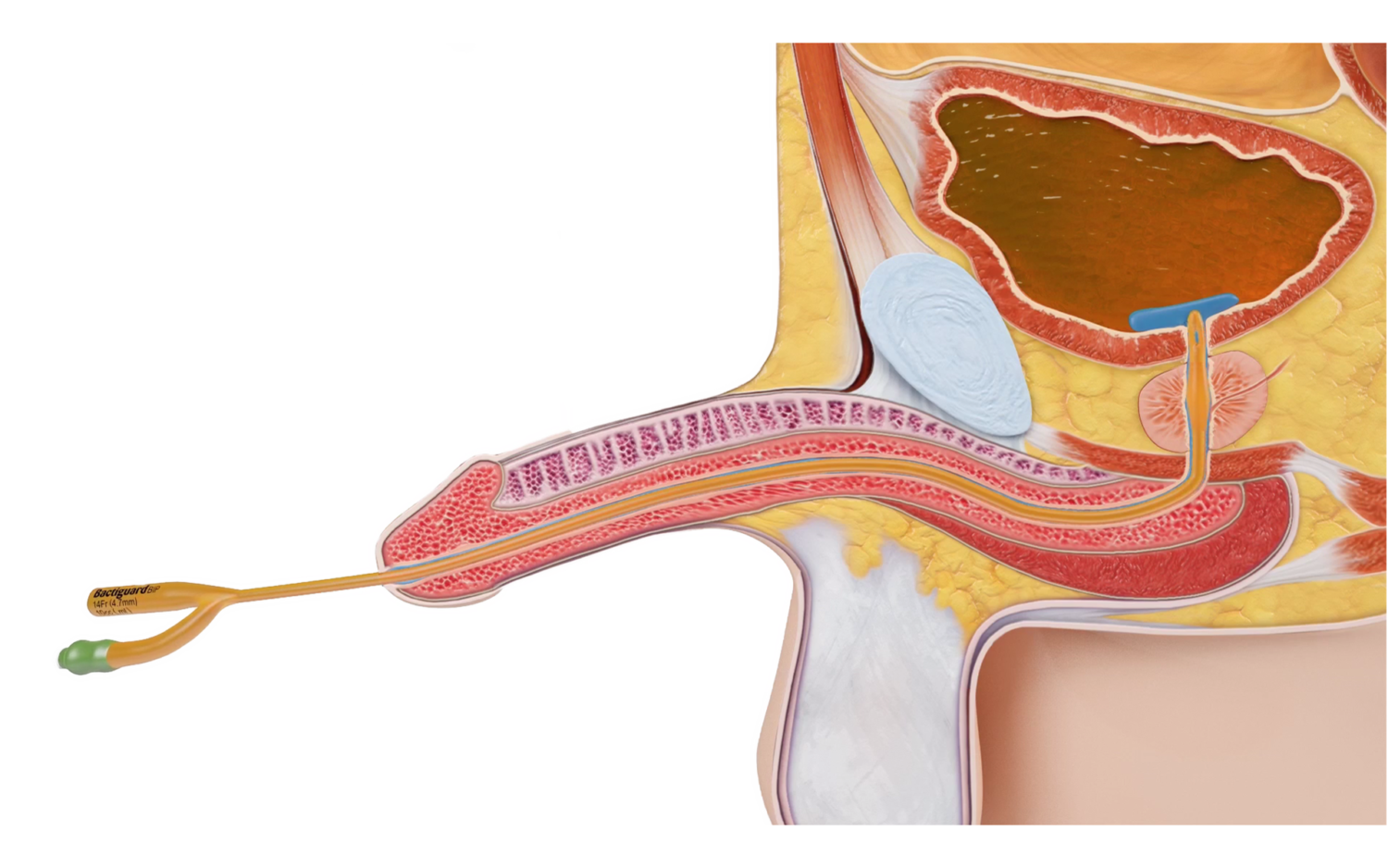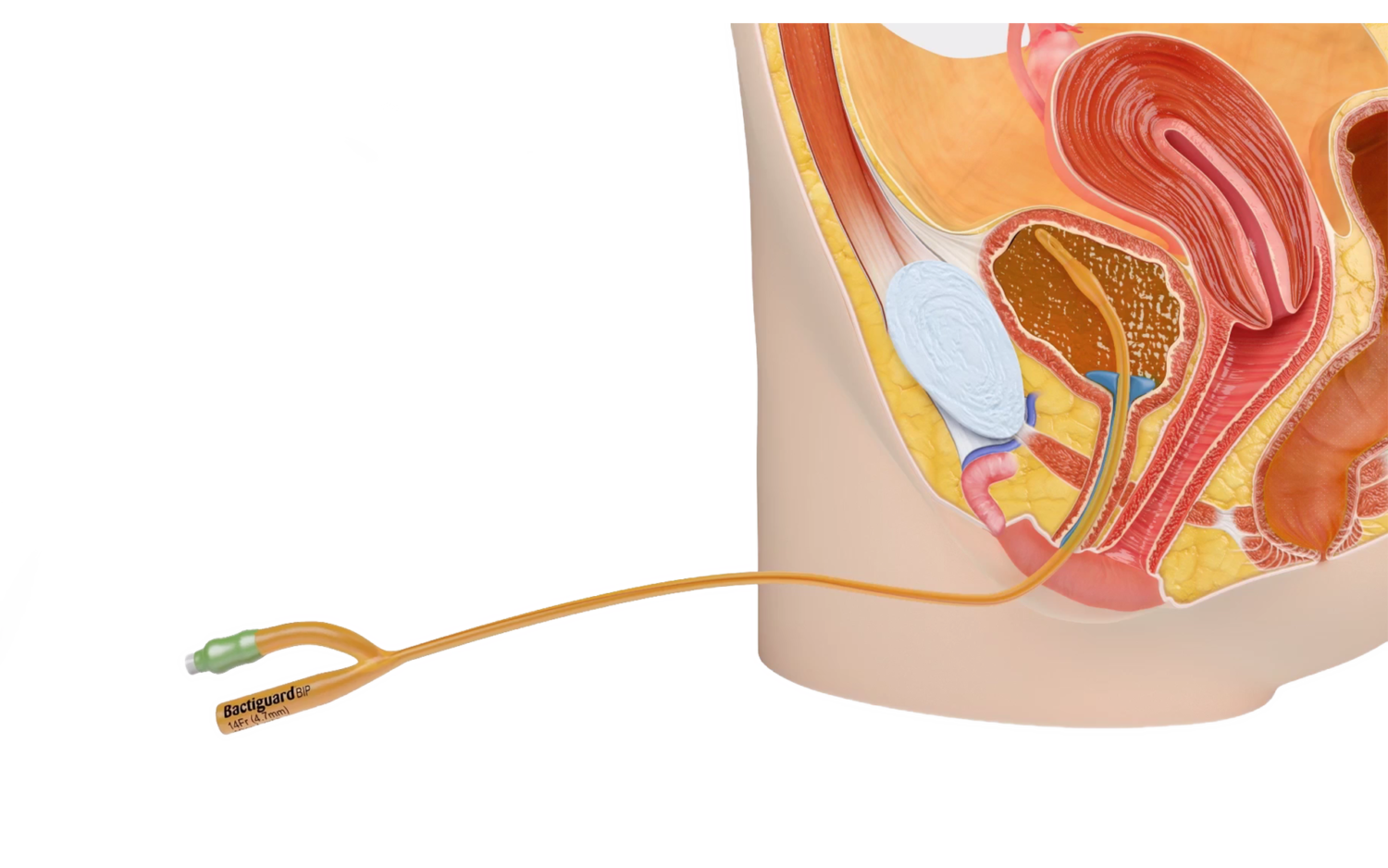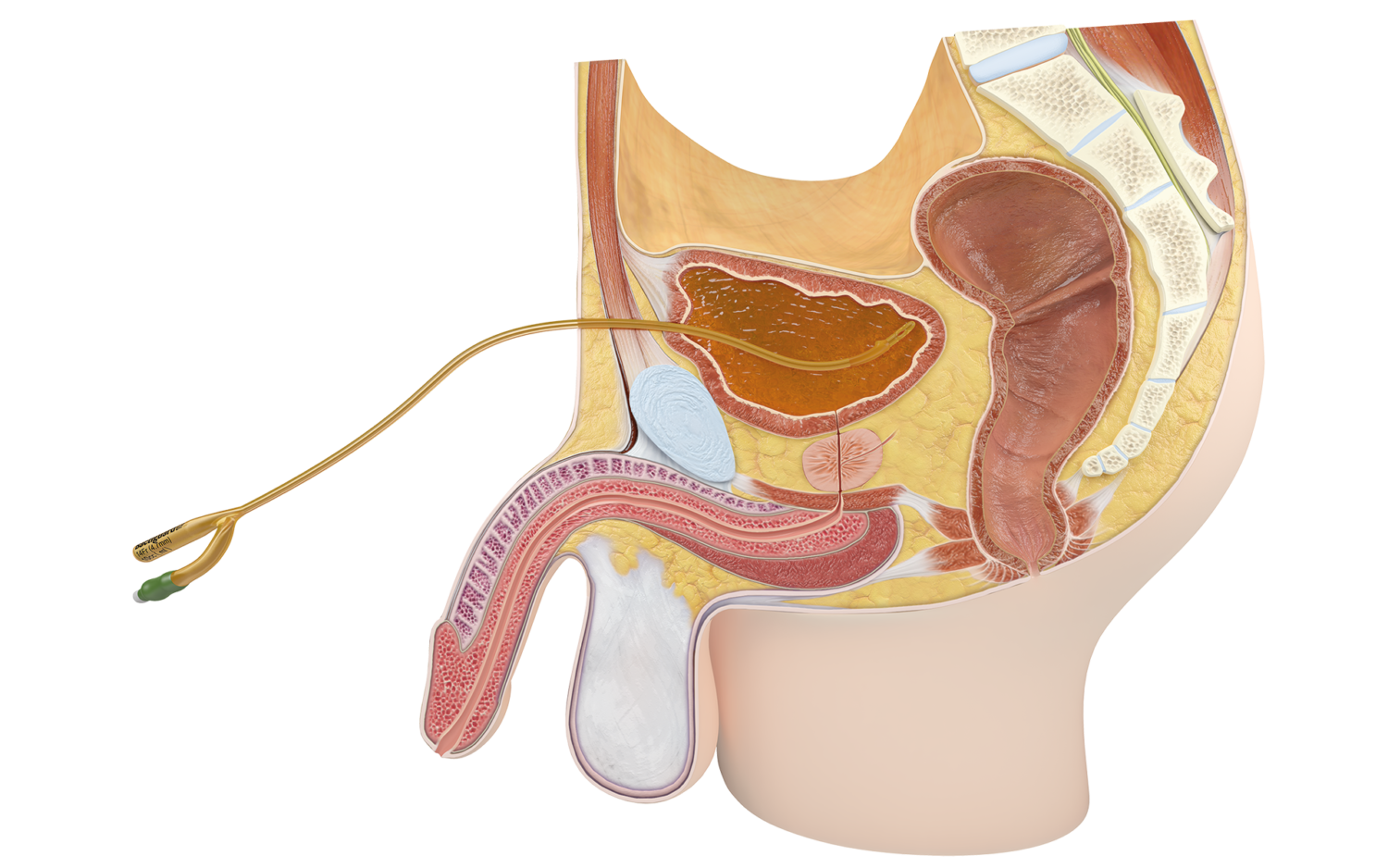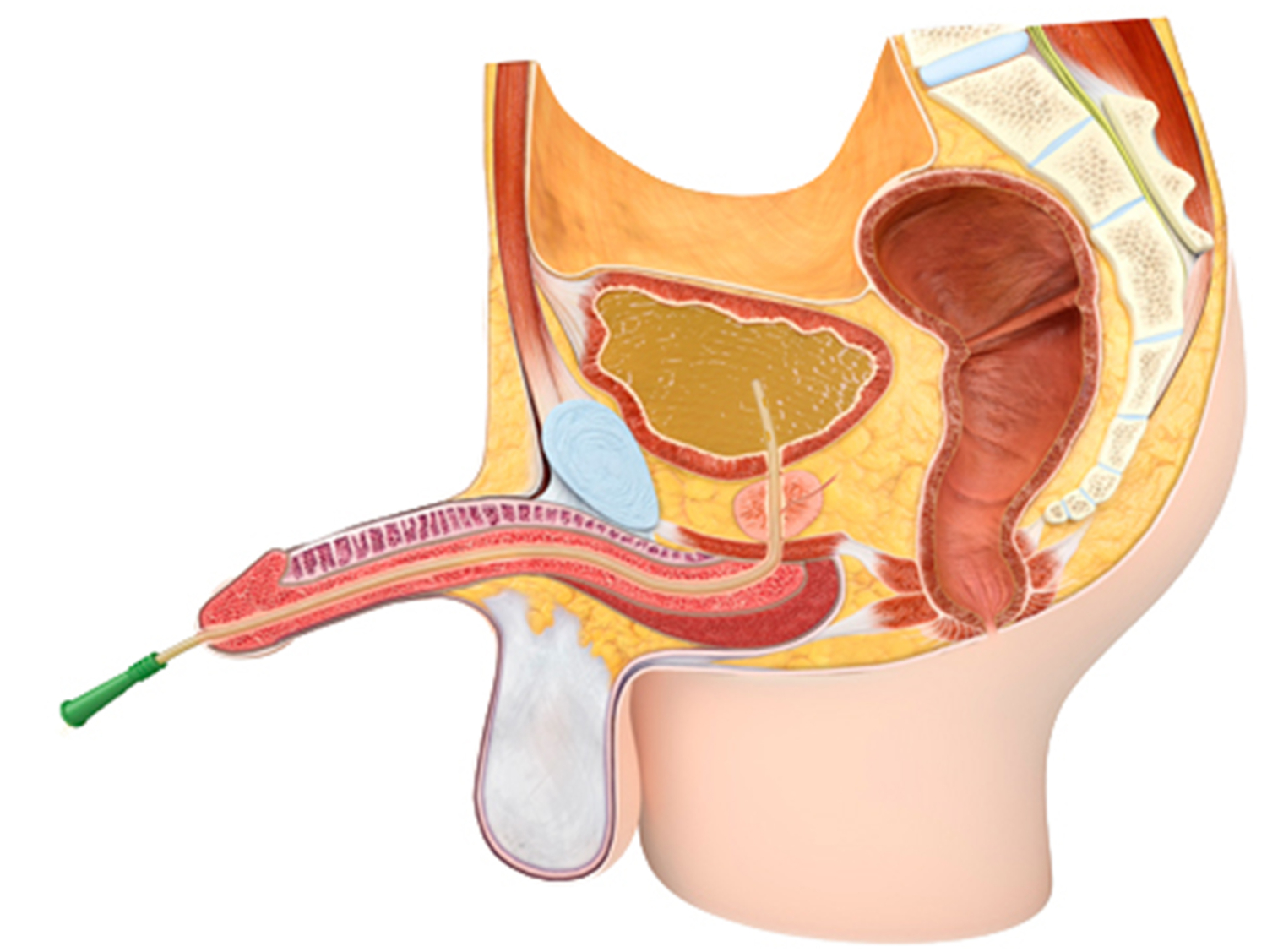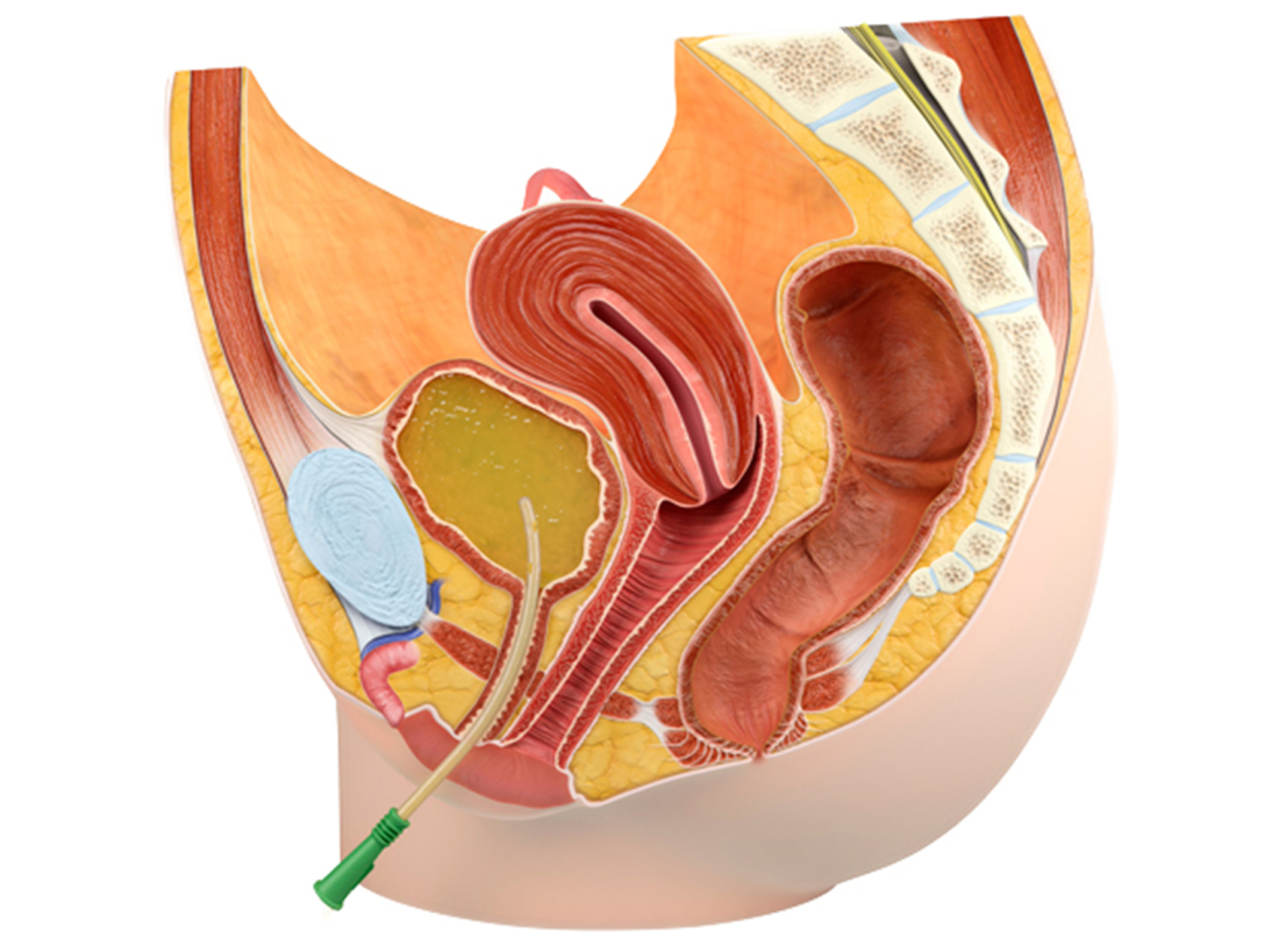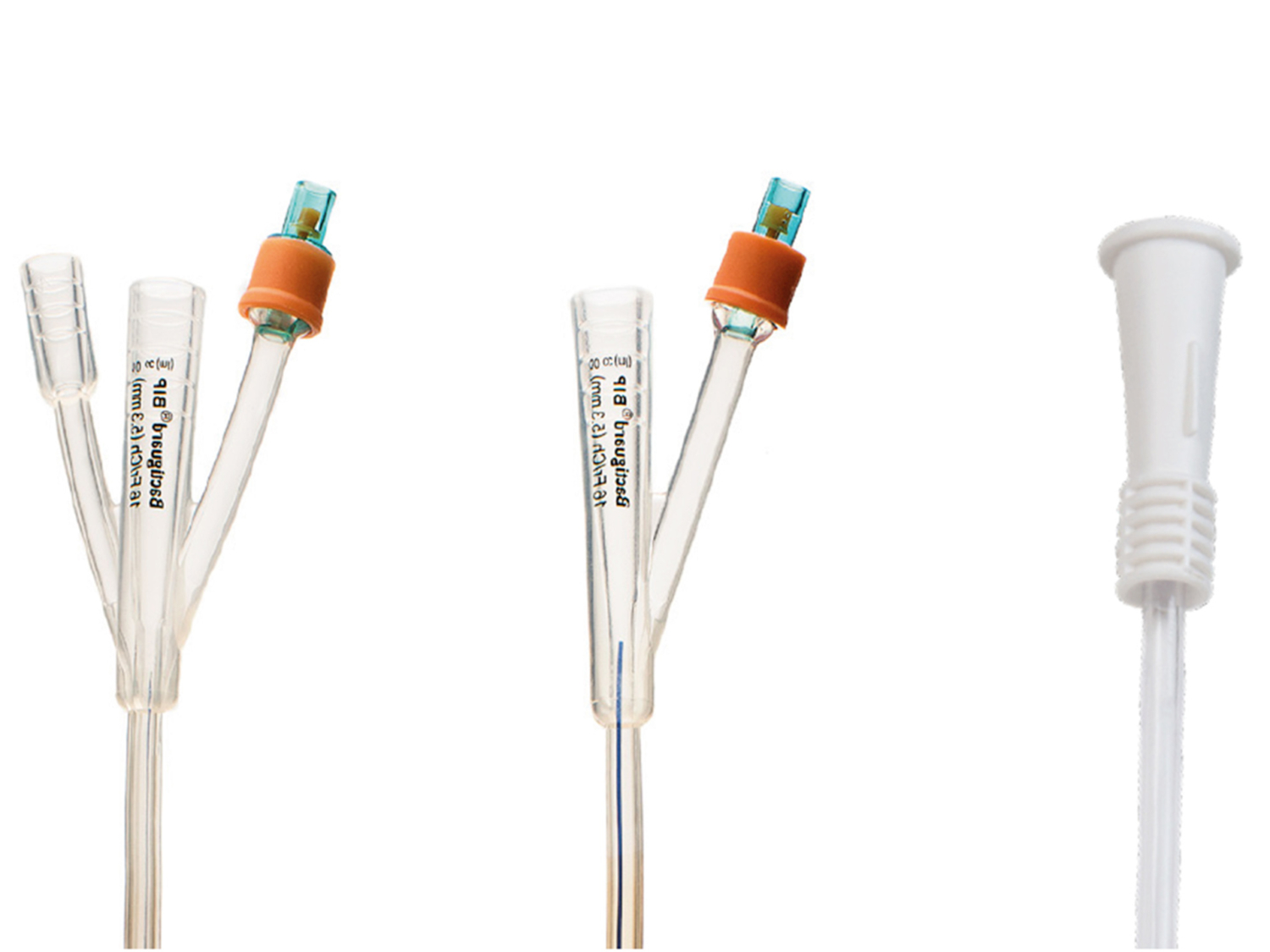Indwelling catheters can be used in two different ways, either through the urethra or by suprapubic catheterization. Alternatively intermittent catheterization can be performed.
Transurethral indwelling catheterization
Transurethral catheterization is most commonly performed and is often handled by nurses or nurse assistants in a hospital ward, primary care unit or in home care.
Suprapubic indwelling catheterization
A suprapubic catheter is an alternative to the urethral catheter and is inserted into the bladder surgically through the anterior abdominal wall under local anesthesia. The suprapubic catheter is surgically inserted by a physician and then handled and changed by nurses in a hospital ward, primary care unit or in home care. This can be recommended for patients who will be treated for the foreseeable future (e.g. chronic indwelling catheter). Many patients, such as wheelchair users, prefer this method.
A suprapubic catheter gives the opportunity to pass urine through the urethra when possible. It keeps the catheter away from the urogenital area to avoid urethral damage, and it also helps in keeping the patient’s sexual integrity.
Self-catheterization
RIK male and RIK female
Images adapted from the patient website Kateterfakta.nu developed by the network Nikola.nu
Intermittent self-catheterization is handled by the patient who inserts a catheter into the bladder and removes it again when the urine is emptied, normally four to six times a day. Intermittent self-catheterization is recommended when possible according to the patient’s ability, and if storing the urine in the bladder is acceptable.
1-Way, 2-way or 3-way catheters
1-Way urinary catheters
Intermittent catheters are 1-way catheters. They have only one channel for passage of urine.
2-Way urinary catheters
The most used indwelling catheters are 2-way catheters, which hold two channels: one channel is for the passage of urine and the other one is for balloon inflation and deflation.
3-Way urinary catheters
3-way catheters are available with a third channel to facilitate continuous bladder irrigation. This urinary catheter is primarily used following urological surgery or in case of bleeding from a bladder or prostate, and the bladder needs continuous or intermittent irrigation to clear blood clots or debris.
Source: All material has been written and reviewed by Märta Lauritzen, registered nurse and urotherapist and Helena Thulin, registered nurse and PhD, Karolinska University Hospital, Stockholm.

